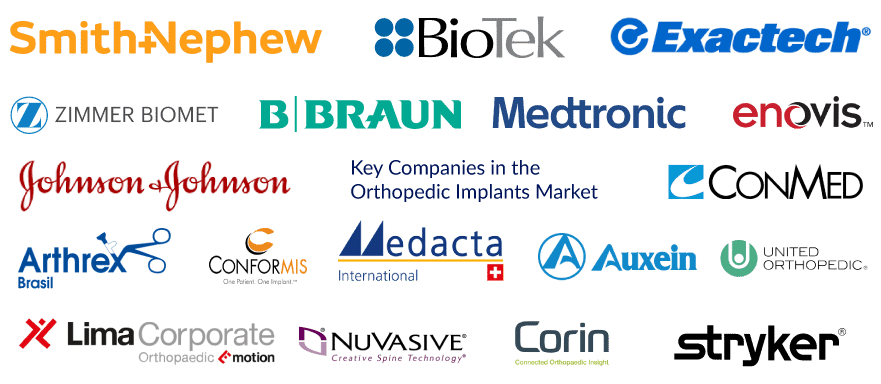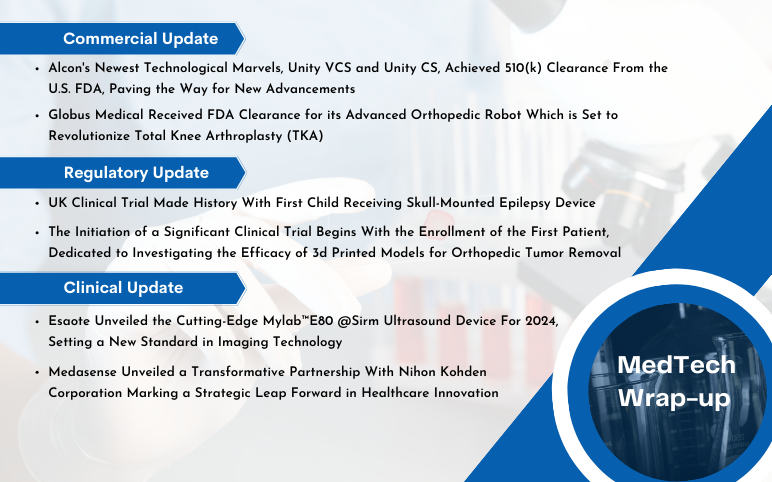Orthopedic Implants: Evaluating the Market Potential of the Unparalleled & Life-Saving Equipment
Mar 22, 2023
Table of Contents
Musculoskeletal disorders are one of the most common disorders affecting a significant proportion of the population worldwide. They can have severe long-term pain, high levels of physical disability, various types of psychological distress, and reduced quality of life. As per the WHO (2022), musculoskeletal conditions are one of the leading contributors to disability and deaths worldwide.
As per the estimate, about 1.71 billion people suffer from various musculoskeletal diseases, such as osteoporosis, osteoarthritis, rheumatoid arthritis, and several others. Moreover, nearly 528 million people suffered from osteoarthritis, and 18 million people had rheumatoid arthritis in 2019. Osteoarthritis contributed to 19 million years lived with disability (YLDs), while rheumatoid arthritis contributed to 2.4 million YLDs globally in 2019. The number of cases associated with Musculoskeletal disorders is growing at an alarming rate. Moreover, the rise in road traffic accidents is another major factor leading to the rising burden of musculoskeletal diseases. Light and fatal injuries from sudden road accidents and sports injuries lead to disability. According to WHO 2022, approximately 1.3 million people die yearly because of road traffic accidents, and around 20-50 million individuals suffer from non-fatal injuries or some sort of disability.
Downloads
Article in PDF
Recent Articles
- Boston Scientific’s Insertable Cardiac Monitor; Phillips-Medisize Teamed up with GlucoModicum; Bo...
- Bioretec Ltd. Gains CE Mark for RemeOs™ Trauma Screw; HoneyNaps’ AI Sleep Diagnostic Softwa...
- Mindray’s TE Air Handheld Ultrasound System; Getinge’s iCast™ Covered Stent System; Clinic...
- Centinel Spine’s Prodisc C Match-the-Disc Cervical TDR System; Reflow Medical’s DEEPER OUS Trial;...
- FDA Approves Abbott’s Spinal Cord Stimulation Systems; Regen Lab Received CE Certification for Th...
Musculoskeletal conditions are common in men and women of all ages and affect all sociodemographic strata of society. Moreover, the prevalence is observed to be directly associated with age, and several lifestyle factors, such as obesity and lack of physical activity. The rising case of musculoskeletal diseases and orthopedic injuries are stimulating the demand for better and more effective treatment products. Apart from therapeutic products, the need for orthopedic implants is also increasing. Orthopedic implants have become an increasingly important component in the medical world and in the treatment journey of the affected patients. Orthopedic implants play a key role in musculoskeletal conditions such as sports injuries and degenerative disorders. Their potential to improve the quality of life for millions of people is undeniable, and the demand for new and better alternatives is growing at an immense pace. Similarly, several MedTech companies are also actively working to deliver various orthopedic implants which are more sophisticated, reliable, and easy to use.
Growing Demand for Orthopedic implants
Growing joint diseases such as osteoarthritis, rheumatoid arthritis, and post-traumatic arthritis may require surgery and some types of orthopedic implants to strengthen or completely replace the joints in the damaged bones or regions. In recent years, the demand for better orthopedic materials has spurred significant advances in this field, leading to the growth in the design and production of orthopedic implants with better performance and novel properties. Various types of Orthopedic implants are available in the market today based on materials, subsequent biological response, and design. Orthopedic implants include temporary and permanent fracture fixation devices and components such as plates, screws, pins, wires, and nails. Metallic alloys, ceramics, and polymers are some of the most commonly used materials in orthopedic implant products. Among metals, titanium, titanium alloys, and cobalt-chromium alloys are majorly used. These materials are very tough, corrosion-resistant, highly biocompatible, and absolutely reliable. These materials possess different physical, chemical, and biological properties to perform various specific applications and functions. In the case of trauma implants, stainless steel can provide a better outcome.
Orthopedic Implants Products Types and Market Segmentation
Today, several types of orthopedic implants are available in the market. As per the product types, Orthopedic Implants are segmented as hip implants, knee implants, spinal implants, foot and ankle implants, and others. Based on the product type segment of orthopedic implants, the knee implants category is projected to register a significant growth in revenue in the overall orthopedic implants market in the coming years owing to several advantages associated with these particular types of Implants and the rise in the number of cases of knee injuries. The knee implant reduces the pain due to any bone disease or injury. It provides adequate relief to the patient over non-operative treatments such as knee injections, anti-inflammatory medications, etc. Knee implant improves pain and mobility and enhances the quality of life. The user can return to do the day-to-day tasks without much hindrance.
Orthopedic Implants – Regional Market Assessment
As per the assessment, among all the regions, North America is expected to dominate the overall global orthopedic implants market in terms of revenue generation in the coming years. The market in the North American region is anticipated to grow owing to factors such as the rising prevalence of chronic bone diseases and the increasing old age population. North America has a very high prevalence of chronic bone diseases. The rising prevalence of arthritis in the US is the major factor responsible for the growth of the orthopedic implants market in the region. As per the estimate, there will be around 78.4 million people suffering from doctor-diagnosed arthritis by 2040, and out of that, two-thirds will be the women population. According to CDC 2022, around 54.1 million US adults were 65 or older in 2019; by 2060, this number will reach up to 94.7 million in the US. The increasing age makes one susceptible to several health issues, including bone diseases.
Along with the presence of a large patient pool in the country, the active presence of key companies involved in producing orthopedic implants, high-tech medical facilities, and the increasing focus of manufacturers on launching new products in the market is further anticipated to stimulate the orthopedic implants market growth in the region.
Key Companies in the Orthopedic Implants Market
Globally, some of the leading companies in the Orthopedic Implants Market include Smith+Nephew, Stryker, Zimmer Biomet, Johnson & Johnson Services, Inc.Biotek (Chetan Meditech Pvt. Ltd.), CONMED Corporation, Medtronic, Enovis, B. Braun SE, Corin Group, Exactech, Inc., Meril Life Sciences Pvt. Ltd., Arthrex, Inc., Conformis, Medacta International, Globus Medical, Auxein Medical, United Orthopedic Corporation, LimaCorporate S.p.A., NuVasive®, Inc., and others.

Considering the growing demand for Orthopedic Implants, several major MedTech giants are anticipated to enter the market in the coming years. Similarly, the launch of numerous new products is also expected to drive the Orthopedic Implants Market.
Key Developmental Activities in the Orthopedic Implants Market
Over the past few years, several major Clinical, Commercial, and Regulatory developments have been registered in the Orthopedic Implants Market. The developmental activities have immensely stimulated market growth. Some of the key activities in the domain include:
- In September 2022, Zimmer Biomet Holdings, Inc., a global medical technology leader, received the US FDA 510(k) clearance of the Identity™ Shoulder System for anatomic, reverse, and revision shoulder replacement.
- In September 2021, Tyber Medical, LLC, a leading orthopedic device manufacturer providing private-label ORTHOPEDIC Implants for the trauma, extremity, and spine markets, received its second and largest US FDA 510(k) clearance for its expanded line of anatomical plating systems.
- In November 2022, Exactech, a developer and producer of innovative implants, instrumentation, and smart technologies for joint replacement surgery, obtained 510(k) clearance from the US Food and Drug Administration to market the TriVerse™ primary knee system.
- In July 2020, Orthofix Medical Inc., a global medical device company focused on musculoskeletal healing products, received the US FDA 510(k) clearance and European CE Mark approval for the JuniOrtho® Plating System, which is designed to address the demands of advanced deformity and trauma reconstruction of the lower extremities.
- In February 2020, 2Bones Global, Inc. received the US Food and Drug Administration clearance to market the Quantum™ Total Ankle Replacement System. Therefore, the above-mentioned factors are expected to bolster the growth of the orthopedic implants market in the United States during the forecast period.
Orthopedic Implants – Market Outlook and Future Perspectives
Orthopedic disorders have a serious economic impact on the affected person through direct health expenditure and indirect loss of productivity. Besides increased health care spending, musculoskeletal disorders also lead to permanent disability and poor health outcomes. The burden of Orthopedic disorders is predicted to increase in the coming years. However, several medications and implants have emerged as a potential options to improve the overall quality of life for people affected by Orthopedic diseases.
As per DelveInsight’s assessment, the global Orthopedic Implants market is anticipated to grow at a CAGR of 5.46% during the forecast period (2022-2027). Similarly, the demand for medication is also expected to grow. The Orthopedic Implants market is anticipated to depict growth owing to the increasing prevalence of orthopedic diseases, the growing burden of the geriatric population, and the rising number of road accidents, sports injuries, and other types of injuries. Moreover, the growing focus of the MedTech giants to develop Orthopedic Implants with higher safety, affordability, and usability for people affected by different disorders and injuries is also anticipated to stimulate market growth and revenue generation further opportunity. However, the high cost of the procedure, coupled with the need to undergo revision surgery and stringent regulatory approval for orthopedic implants, may restrain the market growth.

Downloads
Article in PDF
Recent Articles
- Asensus Surgical Acquired by Karl Storz; Allosource® Launched Aceconnex®; Siemens Healthineers FD...
- PAVmed-Novosound’s Partnership; J&J Acquires Abiomed; Approval to Sysmex’s Assay Kit t...
- Össur Launches POWER KNEE; DePuy Synthes Acquires CrossRoads Extremity Systems; Myomo’s MyoPro; A...
- Centinel Spine’s Prodisc C Match-the-Disc Cervical TDR System; Reflow Medical’s DEEPER OUS Trial;...
- Icotec’s VADER Pedicle System; Terumo BCT’ Reveos Automated Whole Blood Processing System; ...



